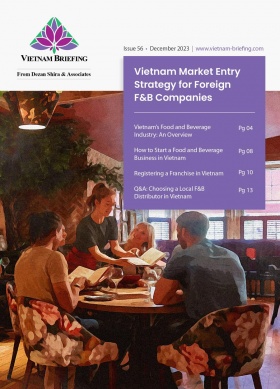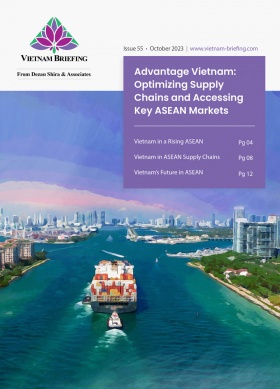Vietnam’s 2021-2030 National Forestry Planning: Key Objectives and Implications
Vietnam’s 2021-2030 National Forestry Development Planning is the latest policy effort by the country’s government to redirect its forestry sector towards a sustainable development roadmap. This article will explore the key objectives and specific plans under the new plan, as well as discuss its implications for the nation’s sustainable commitment.
Main goals of the 2021-2030 National Forestry Development Planning
Under Decision 895/QD-TTg, the Vietnamese Prime Minister approved the National Forestry Development Planning for 2021-2030, with a vision to 2050. The plan aims to promote sustainability in the forestry sector by improving forest quality while maintaining a national forest cover rate of 42-43 percent.
Vietnam seeks to improve the forestry sector’s economic contribution through the sustainable use and management of forest resources. The plan encourages broad social participation to ensure balanced contributions from diverse stakeholders.
Aligned with national commitments to environmental protection and climate change mitigation, the plan emphasizes the sector’s potential in sustainable development. The total investment required is estimated at US$8.73 billion, with US$4.29 billion allocated for 2021-2025.
Specific objectives
To realize the main goals, the Vietnamese government outlines specific objectives, including:
- The national forest cover rate of 42-43 percent: Vietnam will focus on improving forest quality, especially in existing natural forests, while maintaining its forest coverage.
- The average growth rate of forestry production value at 5-5.5 percent each year: Wood and forest products are expected to reach export values of US$20 billion by 2025 and US$25 billion by 2030, while having domestic consumption values of US$5 billion and US$6 billion, respectively, by 2025 and 2030. The domestic wood volume is set to reach 35 million m³ by 2025 and 50 million m³ by 2030.
- Planning for special categories of forest areas: The planning includes planting an average of 238 thousand hectares of production forests and 8.6 thousand hectares of protection and special-use forests each year; restoring an average of 22.5 thousand hectares of natural forests per year; and achieving over 1 million hectares of forests certified for sustainable forest management by 2030.
- Increasing the income from production forest plantations: Compared to 2020, the income from production forest plantations per unit area is expected to increase 1.5 times by 2025 and double by 2030.
- An annual 5 percent increase in forest environmental service revenues: In the period 2021-2025, the forest environmental service revenues is projected to be about VND3.5 trillion (US$140 million) per year and set to reach about VND4 trillion (US$160 million) per year in the period 2026-2030.
- Building supporting infrastructure: The Vietnamese government supports the development of forestry information technology and relevant infrastructure systems, especially those serving forest fire prevention and fighting.
- Ensuring sustainable management: By 2030, 100 percent of the forest area managed by organizational owners will be sustainably managed to improve the effectiveness of natural resource conservation and biodiversity conservation, ensure the protective function of forests, and minimize legal violations in forestry.
Vietnam’s planning for forest land to 2030
Decision 895 provides specific plans for forest land area and forestry development in Vietnam by 2030.
During the period 2021-2030, the planned forestry area is targeted to be about 15.85 million hectares, with 92.7 percent of them covered by forest, including:
- 2.45 million hectares of special-use forest land, accounting for 15.5 percent;
- 5.23 million hectares of protective forest land, accounting for 33 percent; and
- 8.16 million hectares of production forest land, accounting for 51.5 percent.
Under the new plan, total forestry land will decrease to around 15.85 million hectares by 2030 from roughly 16.35 million in 2020. However, the actual forest coverage in these areas will increase to 14.697 million hectares by 2030 from 14.677 million hectares in 2020, increasing the national forest coverage from 42.01 percent to 42.7 percent. This showcases Vietnam’s attempt to optimize forest land area to enhance forest quality and ensure its commitment to sustainable development.
|
Vietnam Forestry Planning by Forest Types |
||||
|
Categories |
Total area (million hectares) |
Forested area by 2030 |
||
|
2020 |
2030 |
Million hectares |
Percentages |
|
|
Special-use forest |
2.338 |
2.455 |
2.372 |
96.6 |
|
Protective forest |
5.512 |
5.23 |
4.769 |
91.2 |
|
Production forest |
16.349 |
8.164 |
7.556 |
92.6 |
|
Total |
16.349 |
15.849 |
14.697 |
92.7 |
|
Vietnam’s Planning for Forestry Land in 2021-2030 |
||
|
Regions |
Total forestry land |
Regional forest coverage by 2030 (%) |
|
Northern Midlands and Mountains |
6.065 |
55.4 |
|
Red River Delta |
0.492 |
20.6 |
|
North Central and Central Coast |
5.819 |
54.6 |
|
Central Highlands |
2.730 |
46.7 |
|
Southeast Region |
0.465 |
18.9 |
|
Mekong Delta |
0.291 |
5.6 |
Source: The National Forestry Development Planning
Establishment of an international timber trade center
Vietnam will prioritize the establishment of timber trading hubs in high-tech forestry zones to facilitate the processing and trading of wood and timber products. Subsequently, the country will implement its first international timber trading center while developing new trade promotion programs and market expansion strategies.
The center’s development will be based on:
- Application of modern, automated, and specialized equipment and technology to produce high-quality, value-added products;
- Development of a competent, skilled workforce; and
- Prioritizing state funding for upgrading training facilities.
Key takeaways
The 2021-2030 National Forestry Development Planning replaces the 2006 version, which has expired. It is also a much-needed update to reflect Vietnam’s current context and efforts in building a sustainable forest industry.
Over the past 20 years, the previous plan helped Vietnam achieve 42 percent forest coverage and over 779,000 hectares of planted protection and special-use forests, creating over five million jobs in the sector. However, challenges have surfaced throughout its implementation, showing the country’s lack of grassroots framework, resources, funding, sufficient biodiversity conservation initiatives, and training programs.
The updated economic targets under the new plan are expected to address these obstacles and achieve new goals, including:
- Increasing the value of forests and developing environmental services to attract more revenue;
- Eradicating hunger and poverty in key forestry areas by encouraging the engagement of mountainous communities and ethnic minorities in forestry production; and
- Implement sustainable management of owned forests and improve natural forest quality by setting environmental indicators.
Advisory for potential investors in Vietnam’s forestry sector
Vietnam’s 2021-2030 National Forestry Development Planning offers significant opportunities for investors, especially in sustainable forest management, wood processing, and environmental services. The government’s commitment to increasing forest quality, modernizing the forestry sector, and establishing international timber trade centers presents a conducive environment for growth. With projected export values reaching US$25 billion by 2030 and robust government support, the forestry sector is set to become a key contributor to Vietnam’s economy. Investors should explore partnerships in high-tech forestry zones and sustainable forest management initiatives for long-term benefits.
About Us
Vietnam Briefing is published by Asia Briefing, a subsidiary of Dezan Shira & Associates. We produce material for foreign investors throughout Asia, including ASEAN, China, and India. For editorial matters, contact us here and for a complimentary subscription to our products, please click here. For assistance with investments into Vietnam, please contact us at vietnam@dezshira.com or visit us at www.dezshira.com.
Dezan Shira & Associates assists foreign investors throughout Asia from offices across the world, including in Hanoi, Ho Chi Minh City, and Da Nang. We also maintain offices or have alliance partners assisting foreign investors in China, Hong Kong SAR, Dubai (UAE), Indonesia, Singapore, Philippines, Malaysia, Thailand, Bangladesh, Italy, Germany, the United States, and Australia.
- Previous Article Significance of the Can Tho Development and Urban Resilience Project
- Next Article Typhoon Season in Vietnam: How to Prepare Your Business








